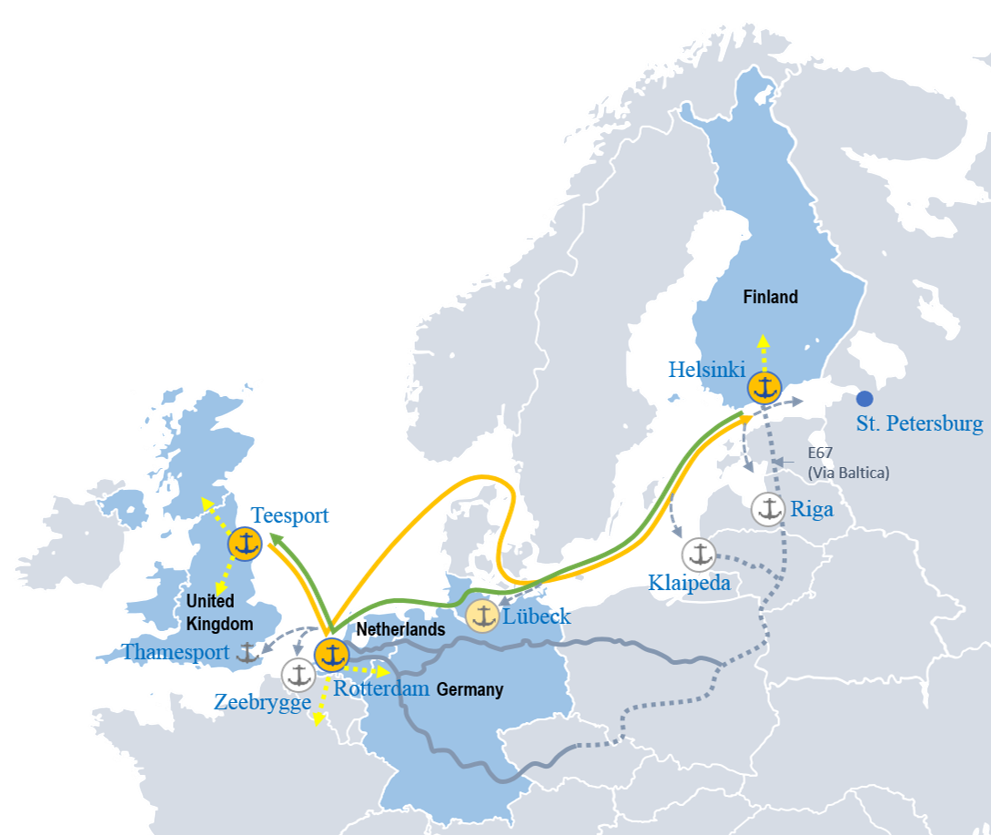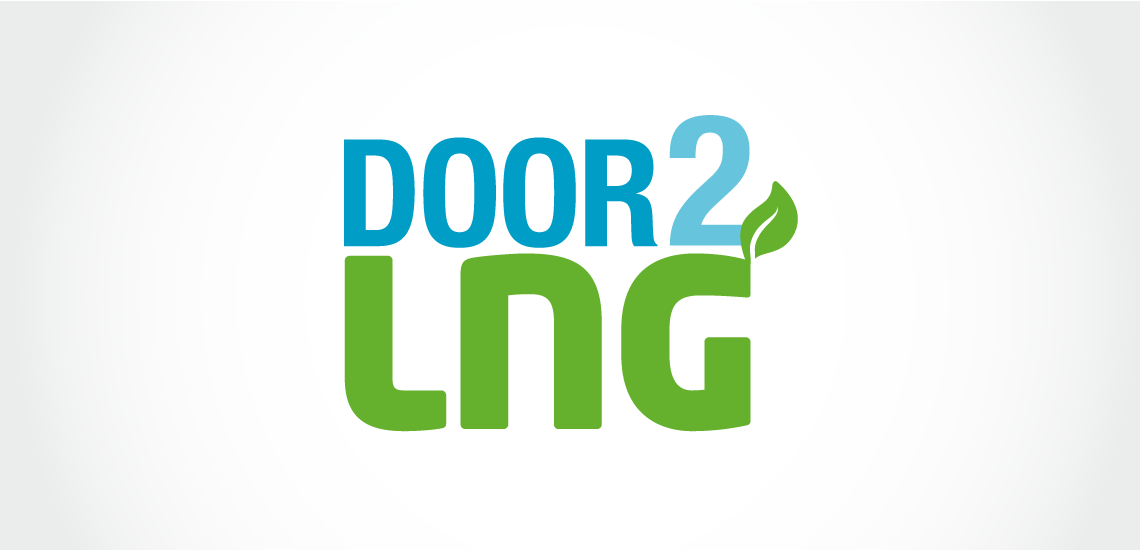The DOOR2LNG is co-financed project by the EU. It is part of EU’s Connect Europe Facility (CEF) –financing instrument and is financed from Motorways of the Sea –program. The whole multimodal logistic chain will be turned to full LNG in the northern Europe. A competitive and environmentally friendly alternative to long-distance road transportation will be introduced through frequent departures and the use of 45-foot containers offering the same loading capacity as road trailers. Through increased maritime capacity, the project will enhance modal shift, moving containers from road transport to sea.
The DOOR2LNG project will upgrade two maritime links within the SECA-region (Sulfur Emission Control Area) to be more environmental friendly. These upgraded maritime links are running between ports of Helsinki, Rotterdam and Teesport. All these ports are defined by EU as TEN-T (Trans-European transport network) core ports.
The environmental improvements are done firstly by the environmental upgrade of new vessels, going beyond the requirements of legislation and secondly by development of port infrastructure –removing bottlenecks of inefficiency and investing in cargo handling capacity and infrastructure.
The upgrade of these short sea shipping links will be a cost effective way to meet the stringent environmental regulations, decrease air emissions (SOX, NOX, PM) beyond the legislation and reduce CO2 emissions in maritime transport, to remove a bottleneck of insufficient container handling capacity in ports and to improve efficiency of the whole logistic chain. The project supports the deployment of the alternative fuels infrastructure.

Activities
- Investing in four new-buildings with additional environmental efforts for environmentally upgrading the existing maritime links
- Development of port infrastructure and efficient cargo handling capacity in the Port of Helsinki in the Multi-Link Terminal located in Vuosaari harbour in Finland
- Development of port infrastructure and efficient cargo handling capacity in the Port of Rotterdam in the Rotterdam Short Sea Terminals in the Netherlands
- Development of port infrastructure and efficient cargo handling capacity in Teesport, UK
- Container visibility and transparency pilot

Main objectives
- Upgrade two existing maritime links between selected core ports in the Baltic and North Sea SECA (Sulphur Emission Control Area)
- Develop a more energy efficient, sustainable, and low emission multimodal container logistics chain in the northern Europe with LNG-fuelled container vessels combined with LNG-fuelled trucks for 45 ft containers and LNG bunkering facilities
- Enable to shift containers from road transport to short sea shipping, leading to decreased emissions and increased safety of road transport, especially in the Via Baltica (E67)
- Upgrade safe and efficient container handling in the selected ports to meet the requirements and capacity of the upgraded links
- Develop safe LNG handling and bunkering procedures in the container terminals with hazard identification and simultaneous operations (loading/unloading of cargo containers and bunkering)
- Investigate different LNG bunkering alternatives and procedures in ports
- Increase the demand and deployment of LNG bunkering infrastructure in the Baltic and North Sea regions
- Vessels to be MARPOL Annex VI and Sulphur directive (2016/802/EU) compliant. MARPOL is International Convention for the Prevention of Pollution from Ships, launched by International Maritime Organisation (IMO). Sulphur directive is dictating maximum level of Sulphur dioxide emissions to air. Sulphur dioxide emissions cause acid rain and generate fine dust. This dust is dangerous for human health, causing respiratory and cardiovascular diseases and reducing life expectancy in the EU by up to two years
- Vessels to meet the IMO’s NOX Tier III requirements in the gas mode. IMO has agreed certain NOX limits that all vessels have to meet
- Achieve NOX reduction of 85 % compared to the conventional vessel, PM reduction of 98 % and CO2 reduction of 25 %
- Meet the requirements of the IMO’s Ballast water Management Convention to prevent the problem of invasive species carried in the ship’s ballast
IMPLEMENTATION SCHEDULE: 16.02.2016-30.06.2019
Project partners:

Supporting organisations:

